
Creative: Himeji, Tatsuno
Himeji Tatsuno:Himeji Tatsuno Nippon leather travelogue
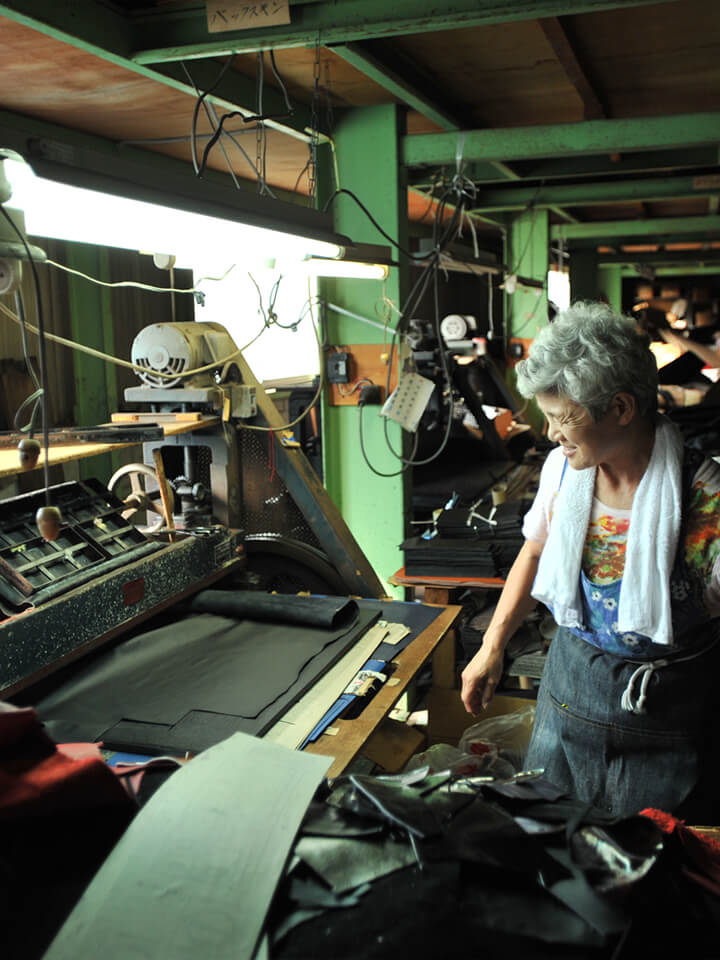
The history of leather is synonymous with the history of humans. Since ancient times, people have protected themselves from the cold and the environment through the ice age and beyond by using animal leather as shoes and clothing. Throughout its history, the tanning and processing techniques to make the leather into products has been renewed and handed down from generation to generation. Europe is said to be the center of leather production, but why is that? The history of leather in Japan is by no means short. Its origins are not clear, but it appeared as a historical fact at least a thousand years ago. There is a region that cannot be overlooked when looking at the roots of Japanese leather. That is the Harima region, Hyogo prefecture. Among them, the production areas are concentrated in two adjacent areas, Himeji and Tatsuno.
Animal skins will corrode in a relatively short period of time if left unprocessed. The technique to process the skin as leather so that it can withstand long-term use has shown continuous development within human history. Perhaps starting with the fact that people noticed that chewing hard skin with your teeth softens it, and discovering other techniques such as applying oil and fat to make the skin softer, soaking it in lye to remove the hair, and smoking it to prevent it from rotting.
Through the accumulation of such primitive discoveries, we found that plant-derived tannins contained in the bark of trees are effective for tanning, and during the Industrial Revolution, metal-derived chromium was discovered to be suitable for more efficient tanning. Leather manufacturing technology continued to be modernized, but it is only after the Meiji era that plant based and chrome tanning became the mainstream in Japan.
In the Harima region, this Western-style leather making using tannins and chrome blossomed during Japan’s Westernization movement during the Meiji era, but traditional leather tanning had been handed down for centuries. There are various versions to the legend, but it is said that in the time of Emperor Shinko, early settlers tried tanning on the Maruyama River in Tajima, but it did not work, and when they went south and tried it on the Ichikawa River in Himeji, they were successful.
"The degree of tanning changes depending on the hardness of the water. Ichikawa river is suitable for men's shoes because it is hard. The amount of water required to tan the skin of an entire cow is 1 ton or more. In leather making, it is key to be located near the river where you have access not only to the groundwater but also riverbed water."
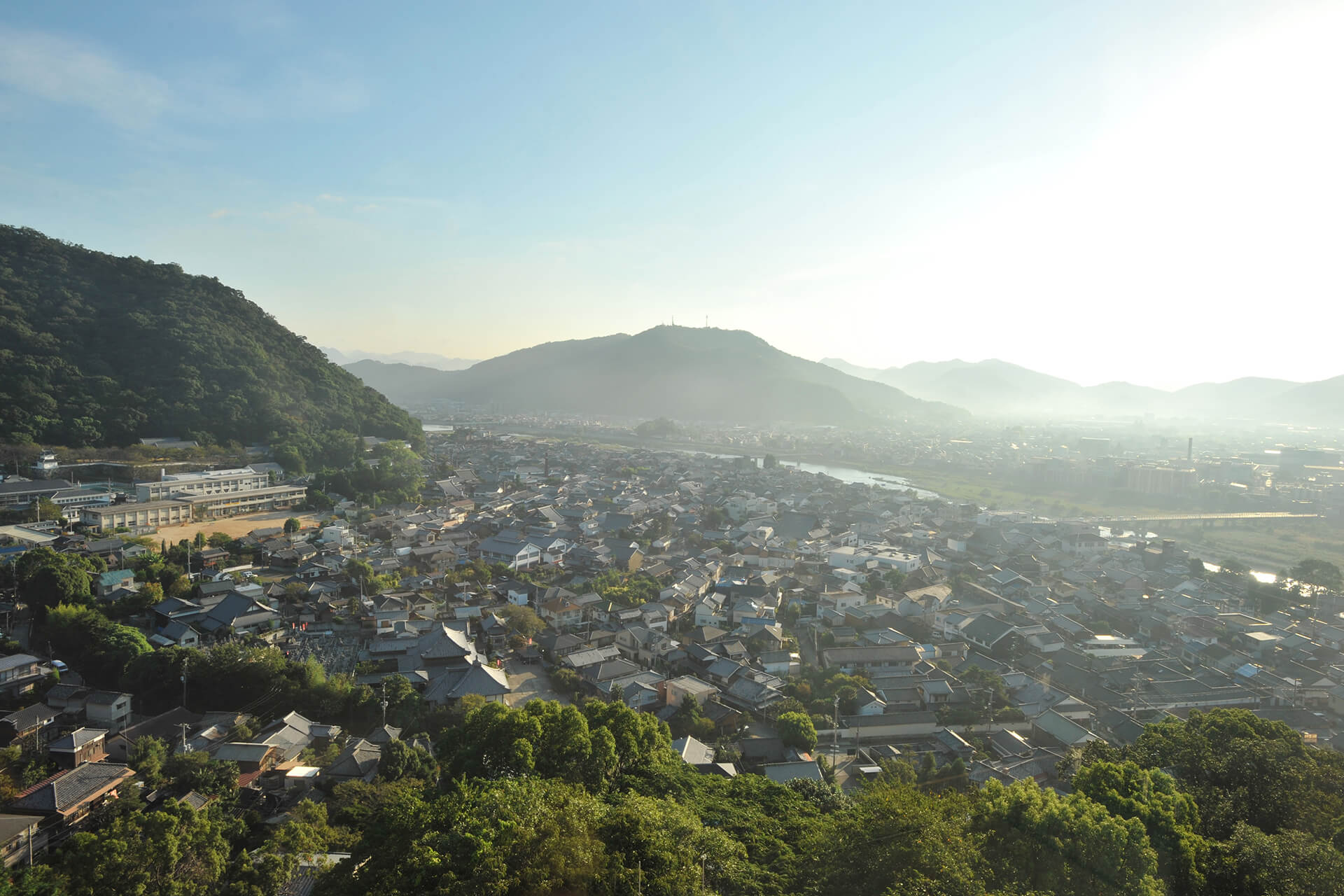
Traditional manufacturing that has been nurtured by age old civilization.
The streets of Tatsuno, which is called the Little Kyoto of Harima, have a simple yet elegant atmosphere.
When you walk the alleys, you can feel people's livelihood, and the environment is pleasant and calm. The peaceful mood accumulated over time is comfortable.
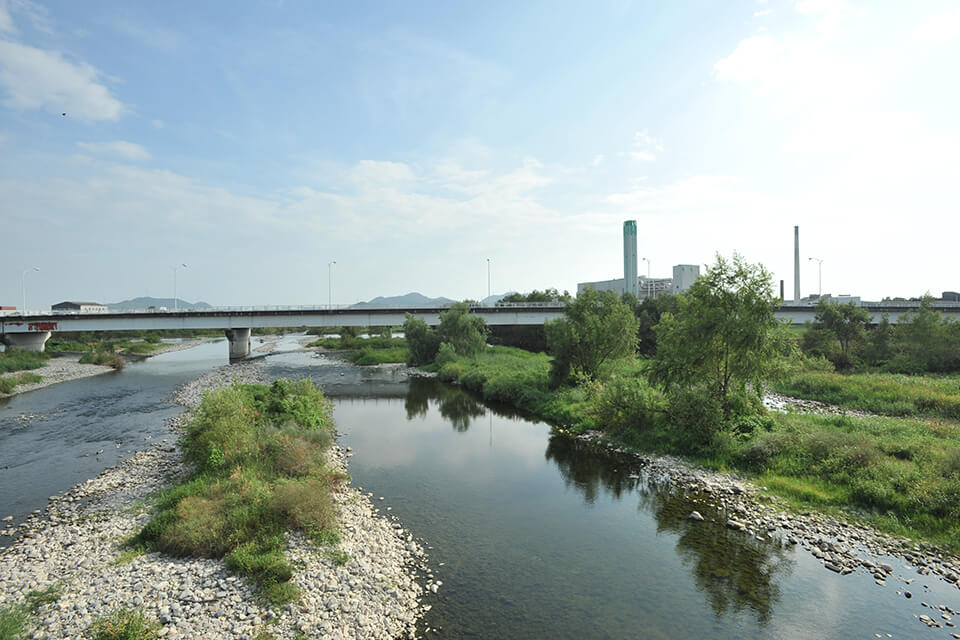
Without this river, Himeji's leather tanning might not have been possible. The white tanning, which has been refined by the specific bacteria and hardness, history and tradition, is the product of the water of this Ichikawa river.
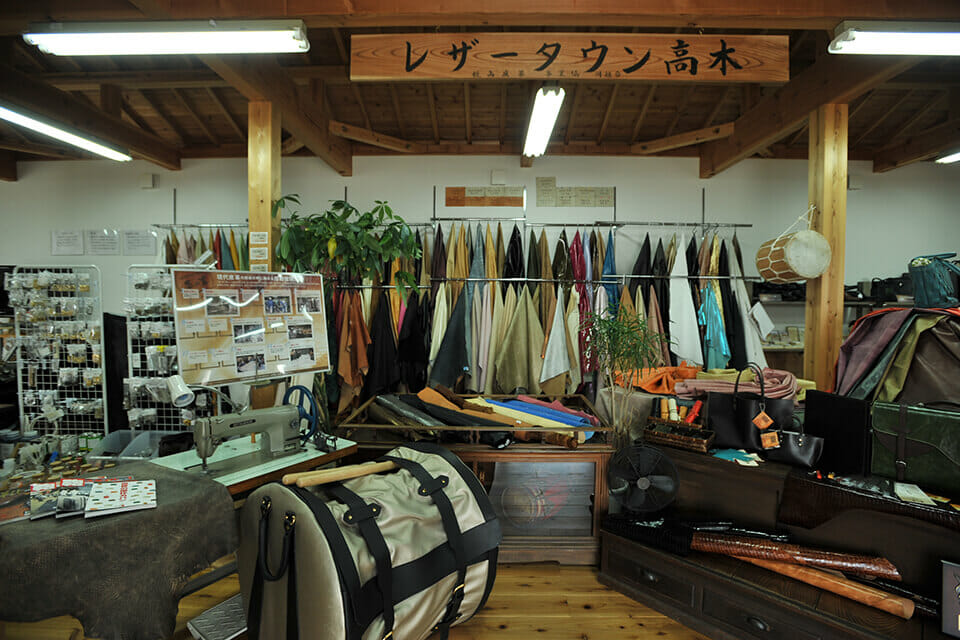
Leather Town Takagi / Leather Village. It is an antenna shop at the entrance of the city that promotes the charm of the regional leather. They will also arrange factory tours in the Takagi area.
We spoke with Mr. Amino of Sanyo, which is about a few minute's drive east of Himeji Station. Celebrating its 100th anniversary next year, the factory holds the largest share in Japan for leather manufacturing for men's shoes. The Ichikawa river is just a stone's throw away. "We were founded in 1911 and I heard that we learned tanning from Russian POWs. During the war, there was military demand, so leather was used for military boots and gun holsters. But that's how one of the buildings got bombed. Originally, the building had several floors, but only the 1st floor remained. Now it is used as a storage area. "
The building we were shown had no ceiling, and the traces of the war were clearly left behind. It is a part of the history of Himeji leather. "The leather we make has changed with the times. Nowadays, we have a wide variety of products in small quantities. It takes time, but the most important thing is to make leather that you can be proud of. If you’re not happy with it, how can someone else be? That thought is what keeps me going. "
Mr. Amino's words are humble but powerful, backed by skill and experience. This is the pride of the long-standing leather-making region. A land where there is an anecdote that Hideyoshi gave Nobunaga 200 pieces of leather as a Banshu souvenir when he was at Himeji Castle. In the Takagi area of the Ichikawa river, the hardness of the water and amount of bacteria were ideal for traditional white tanning, which has been carried out for hundreds of years. Mr. Sakamoto of Sakamoto Shoten says,
"Before the war, everything was white-tanned. Now, I'm concentrating on black leather. I dye white-tanned leather black and use lacquer to create grain. It is a traditional leather that was used in armour, and requires tanning as well as lacquer techniques. Unlike drying leather, drying lacquer requires humidity, and my predecessor used to dry it in the bath. And before that, they wrapped it with straw. Everyone has their own way. If you look at the treasure vault of the Shosoin, you will find lacquer. In English, lacquer or ‘urushi’ is literally translated as ‘Japan’. Black leather is very unique to Japan. "
The studio is lined with shiny black and white. Mr. Sakamoto and his wife are both kendo tsukagawa (leather grip) craftsmen. "The grain side is usually used for leather, but for the kendo shinai (bamboo sword), the back side is used so that it does not slip. Now I sell them online, but I get emails from kids saying how they appreciate my work. It’s very satisfying.”
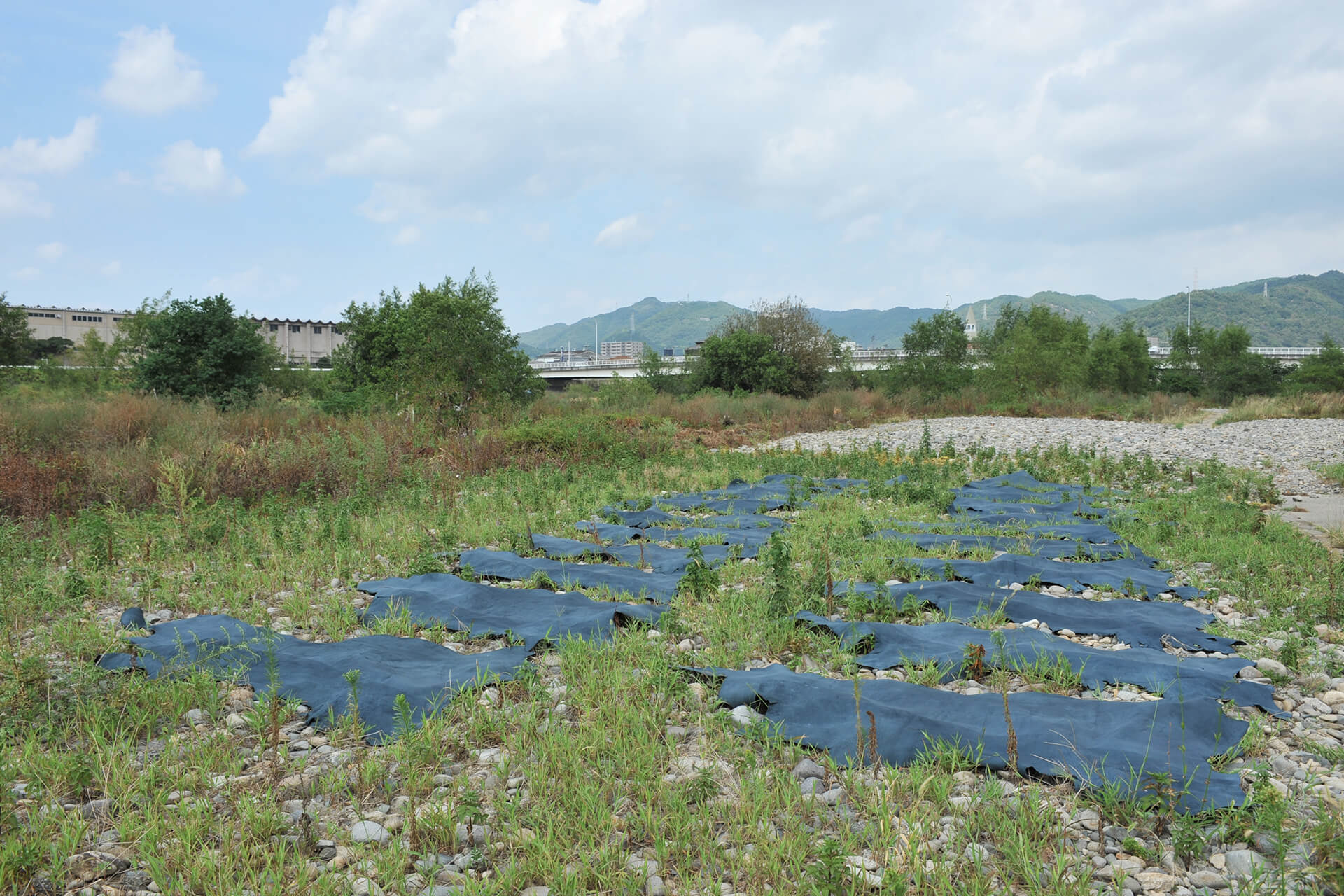
Together with the river, sky, leather and people
The leather is still dried on the banks of the Ichikawa River. When there is a sign of rain, the leather is pulled up in a hurry.
It's a tough job, but the word ‘tradition’ comes to mind. They are adamant in refusing to use dryers since they emit CO2.
Tradition and innovation are combined and new potential is born. That force will build tomorrow. Although there are expensive overseas brands and cheap Asian products, Japanese leather making is still evolving throughout history. The same is true for Tatsuno, another area that supports Harima's leather industry.
"The important thing is who you sell it to. There are many vendors who have a great product but no one to sell it to. But it all depends on the strategy. In the past, in order to measure the trend of whether a product could be sold, we did research in Shizuoka, which gave us a national average. But now, with everything being sold online, the needs of consumers are clearly changing, "
Mr. Hashimoto of Hashimoto Shoji says. It boasts the top share in the world of automobile steering wheel covers. "We make and sell handle covers for all domestic models. Originally, the company made saddle covers for bicycles. We oversee everything from tanning the skin of domestic cows, coloring, coating and cutting, to sewing and commercializing. It's all made in Japan. There are times when a handle cover made in Asia will be included on the shelves of an automobile accessory store, but we are never overrun by our competition.
After all, Japanese people know the best about Japanese people. We keep in mind to make such products. We strive to open up new sales channels with ideas. Japanese leather is very good, so there are so many more opportunities to grow. From now on, I would like to try making custom-made leather products, taking orders online. "
Mr. Hashimoto, who does not lose sight of the future, has an office in the Tatsuno / Matsubara area. It is one of the largest cowhide production areas in Japan, with tanners lined up along the Hayashita River. We visited Mr. Uramoto of Urakami Tannery, also in Matsubara. "Leather is a local industry from ancient times. Because the area houses several tanneries, there is a dedicated water treatment plant specializing in leather throughout the district. The tanning process uses a large amount of water, and the wastewater is treated with advanced technology and returned to the river. It is a leather production area that can be said to be environmentally friendly from a global perspective. Himeji and Tatsuno are working on being environmentally conscious together with local governments as Japan's leading leather production areas. "
Himeji Castle, a World Heritage Site, is of course magnificent, but Tatsuno is also a castle town called Little Kyoto of Harima. It is pleasant to walk along the path with white walls, and the small town's specialties are soy sauce, somen noodles, and leather. While Himeji made leather for gifts or offerings, Tatsuno made leather such as cigarette holders for samurai.
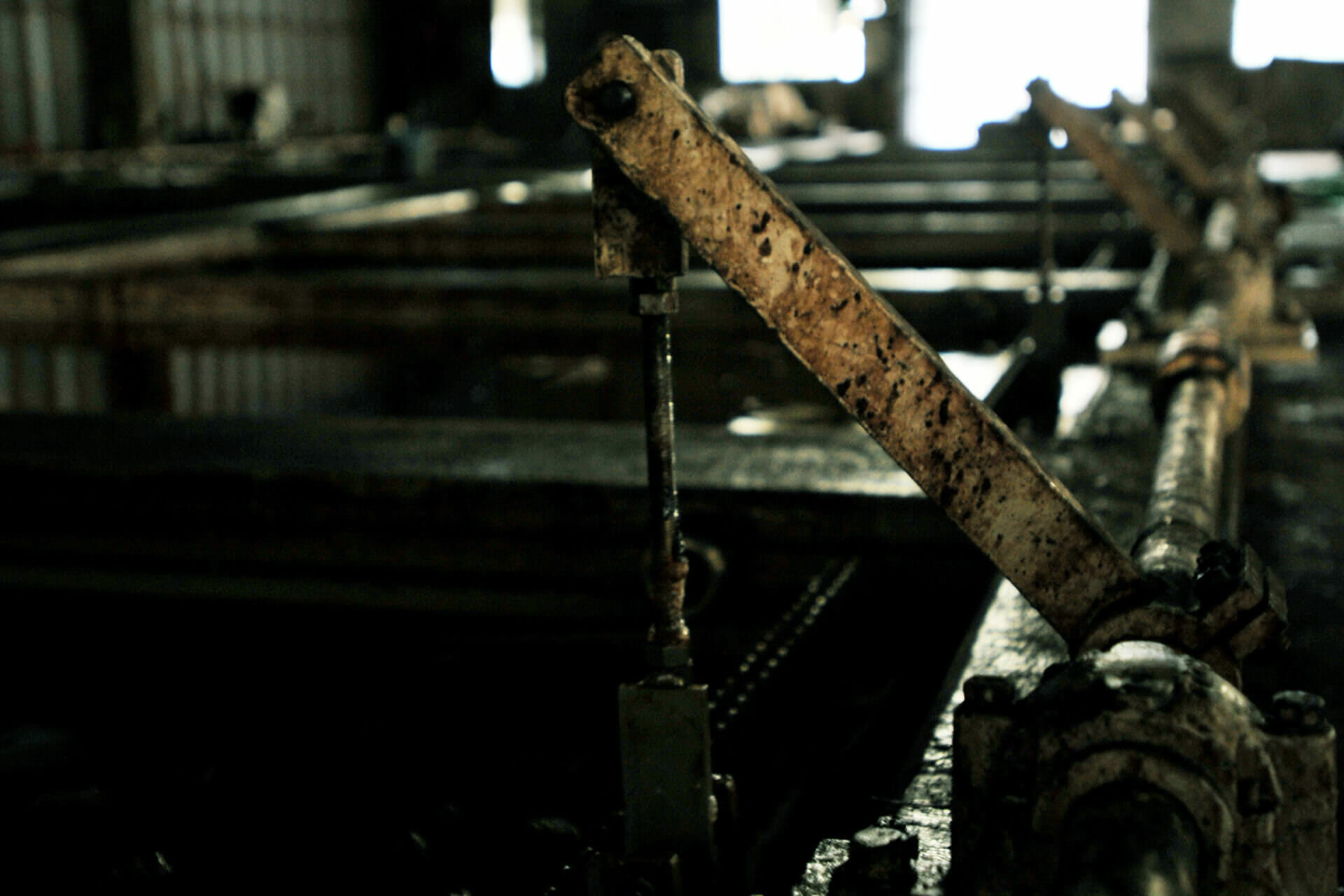
Human devotion is put into each leather making process.
Pit during tanning. Leather is born from the thoughts and tremendous effort of craftsmen, with living creatures as its ancestors. That's why leather stands the test of time.
"I've been doing plant based tanning for some years now. Using drums instead of the time-consuming pit tank. People’s tastes and wants change with the times, so I think leather making should change along with it."
Nakashima Leather, which is a few minutes walk from Mr. Uramoto's factory, and a shop run by the president's sister is in Tatsuno. A Prest. The meaning is "see you soon". "Originally, there were only tanners in Tatsuno. Leather tanning is, so to speak, just the 1st step of the process. But if you don’t pursue change, you won’t make progress. I wanted to revitalize the local area, so I wanted to create a one-stop flow from tanning, product planning, design, sewing, to sales. I started making bags in small lots. My brother oversees the tanning, and Tatsuno is a town of Tanners. There are many leather professionals who know what ‘good leather’ is. I believe that if we deliver high quality leather products to our customers, our pride and passion will surely reach them. "
“We are making products while exchanging information. We have created an official logo mark representing Himeji leather with a study group and have begun to display it on our products. I hope that Himeji leather will become more known to everyone. "
When you stop by Mr. Nakashima's shop, you see a handmade leather class next to the sales floor, and behind that, craftsmen actually make the products. And these craftsmen are young. The song playing the workshop is by GReeeeN.
"It would be really great if the leather industry in Tatsuno became more active by having the next generation come out and become familiar with leather," Mr. Nakashima's dream grows.
Returning to Himeji lightheartedly, we find the Jibasan Building in front of the station. There is a key spot for promoting local industry and a handmade leather workshop is on the floor. BAIMO is a workshop created by the city's leather industry revitalization study group to train leather craftsmen. Mr. Watanabe, the representative, is also a part of the future generation.
"I think we have to make products to let people know about Himeji leather. Only professionals understand the raw materials. Here, young designers gather together like a guild. We make products while exchanging information. We have created an official logo mark representing Himeji leather with the study group and started to display it on products. We hope that Himeji leather becomes more known to everyone."
Harima leather making that supports Made in Japan. It will continue to evolve with the pride nurtured by tradition. I hope that the day will come when people all over Japan will be blessed to encounter such leather filled with thoughtfulness.
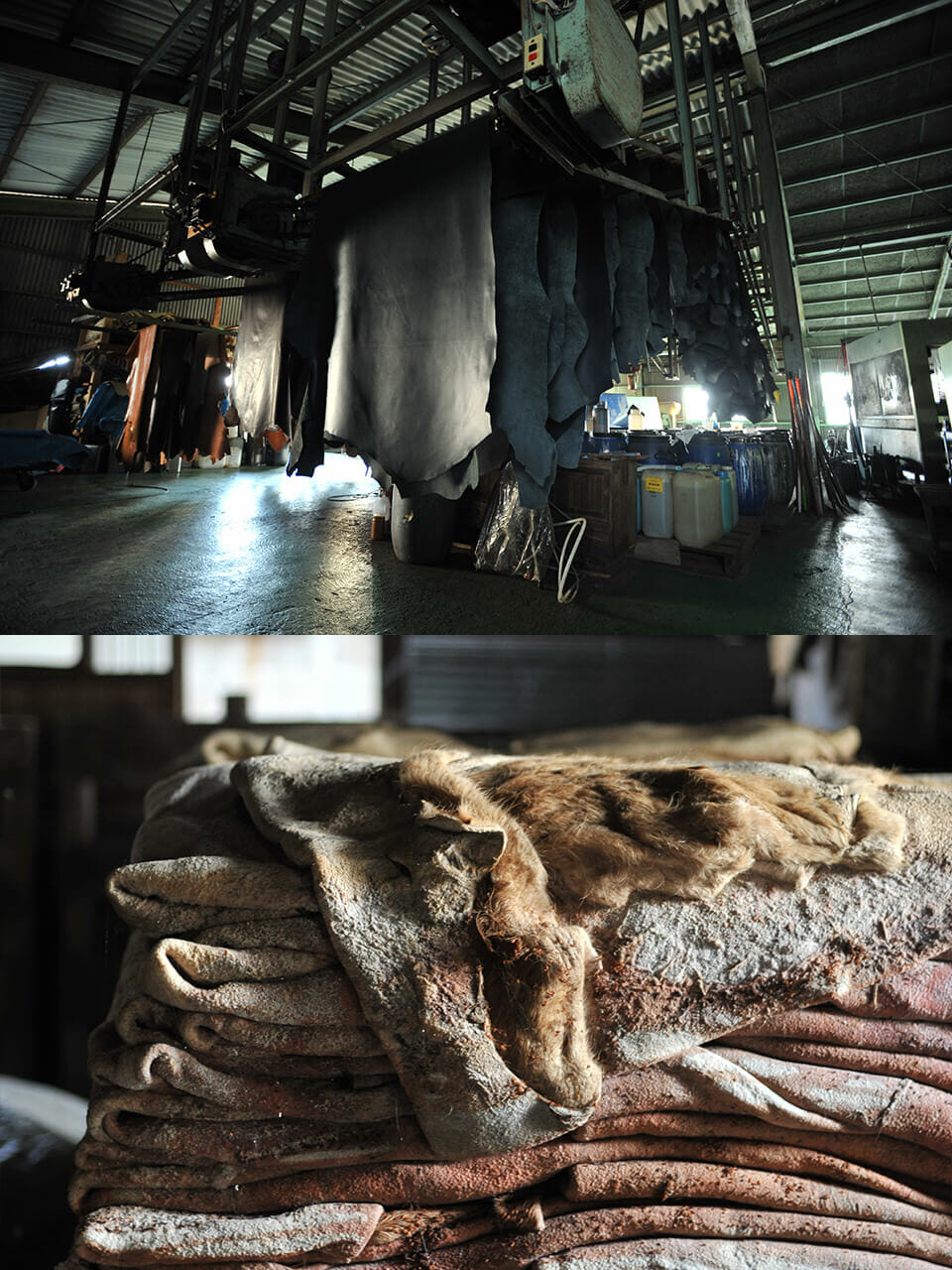
Urakami Leather Mill
Above) On the second floor of the factory, leather that is being finished is waiting for an encounter.
Bottom) The raw leather stored in the warehouse still wears the scent of a beast.
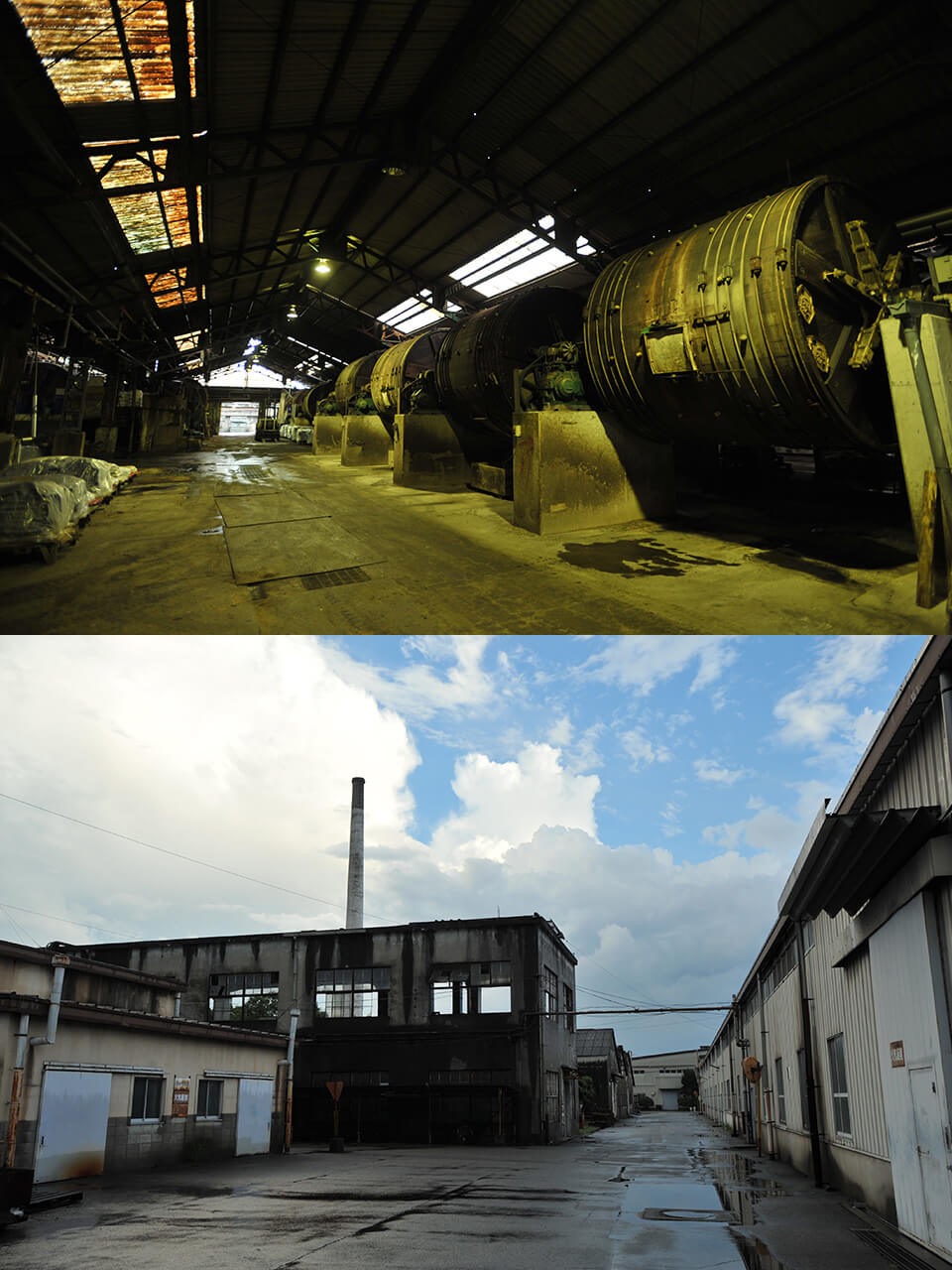
Sanyo
Above) The number of drums is odd, and it is a large factory.
Bottom) This building was originally a four-story building. The war heritage burned by the bomb remains vivid.
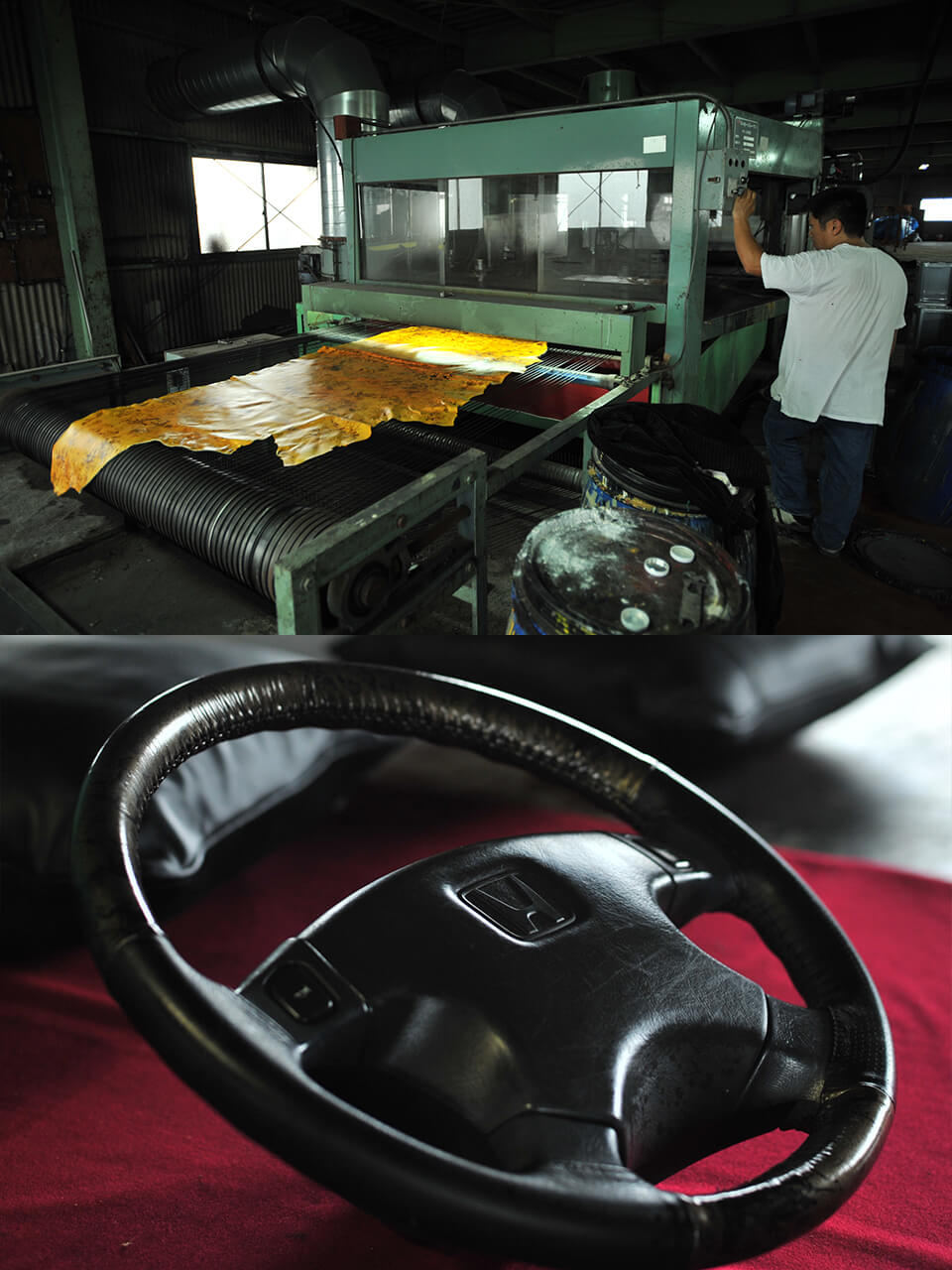
Hashimoto Shoji
Above) Craftsmanship shines in adjustment of the dyeing.
Bottom) He says he knows every single steering wheel for domestic cars. Truly amazing.
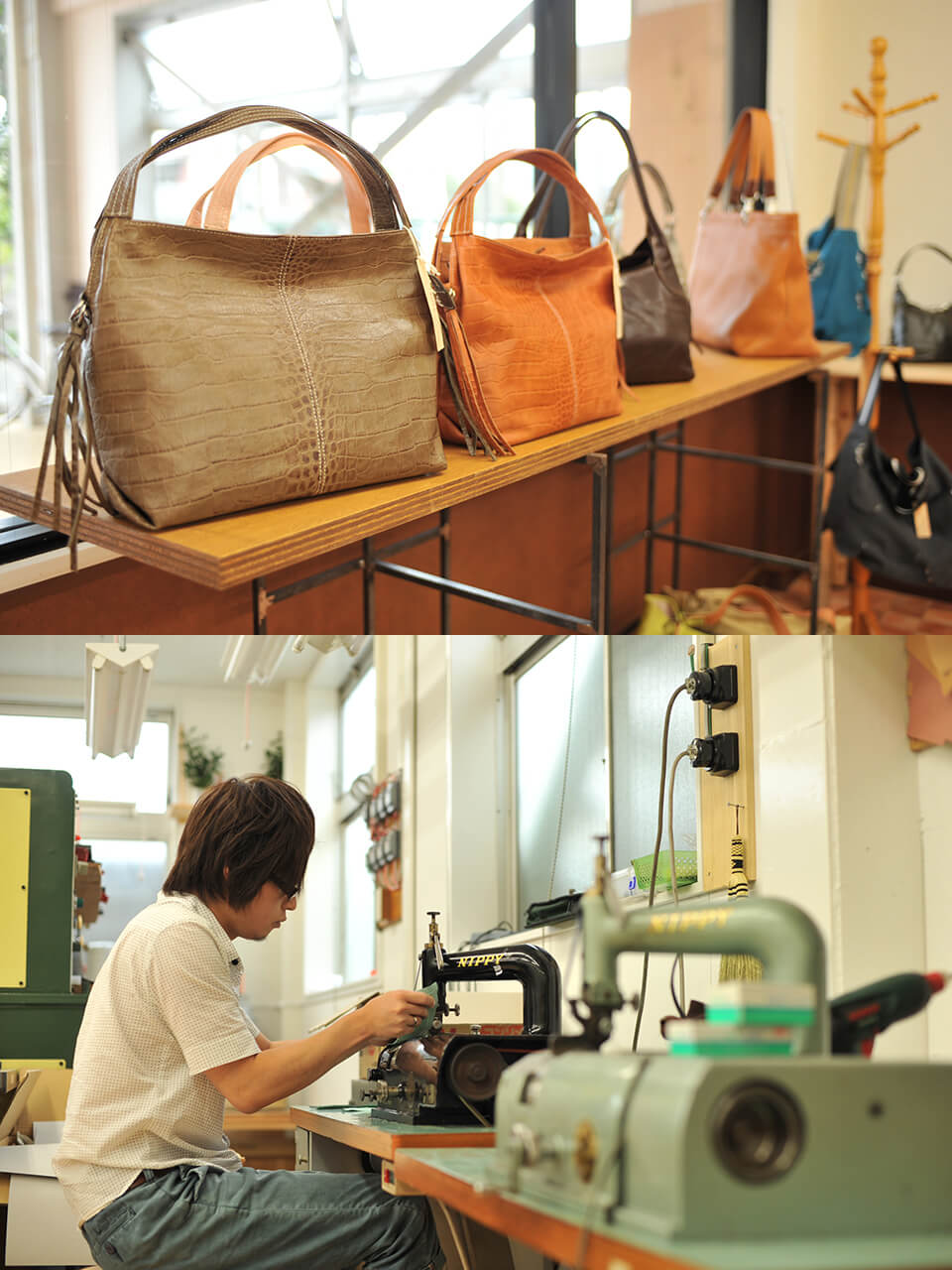
A PREST
Above) A carefully made bag that captures the heart of the user.
Bottom) The sight of young craftsmen is refreshing.
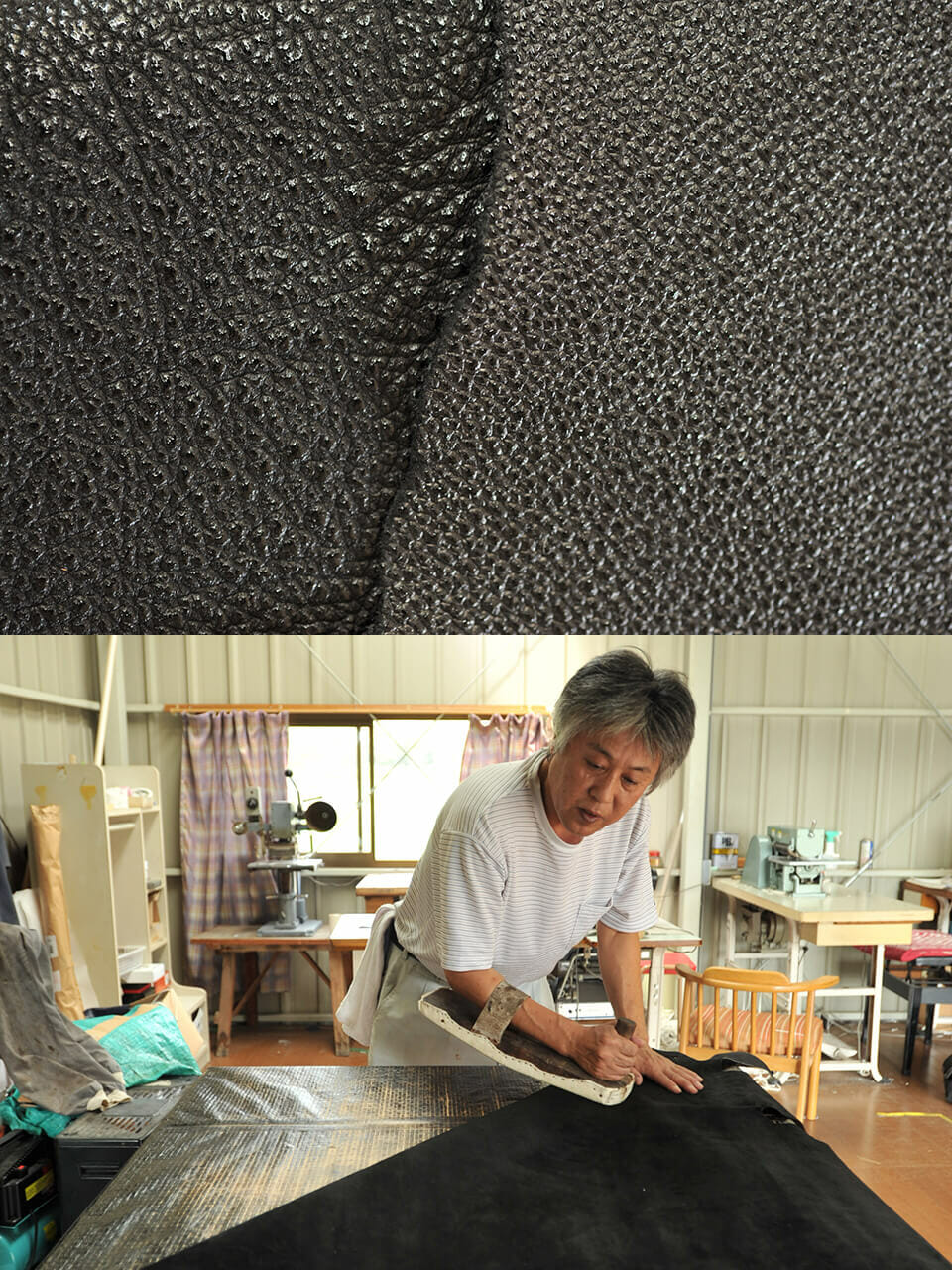
Sakamoto Shoten
Above) The left is the finest black leather. The quality and elegance is simply magnificent.
Bottom) Friendly Mr. Sakamoto, his eyes are sharp when handling leather.
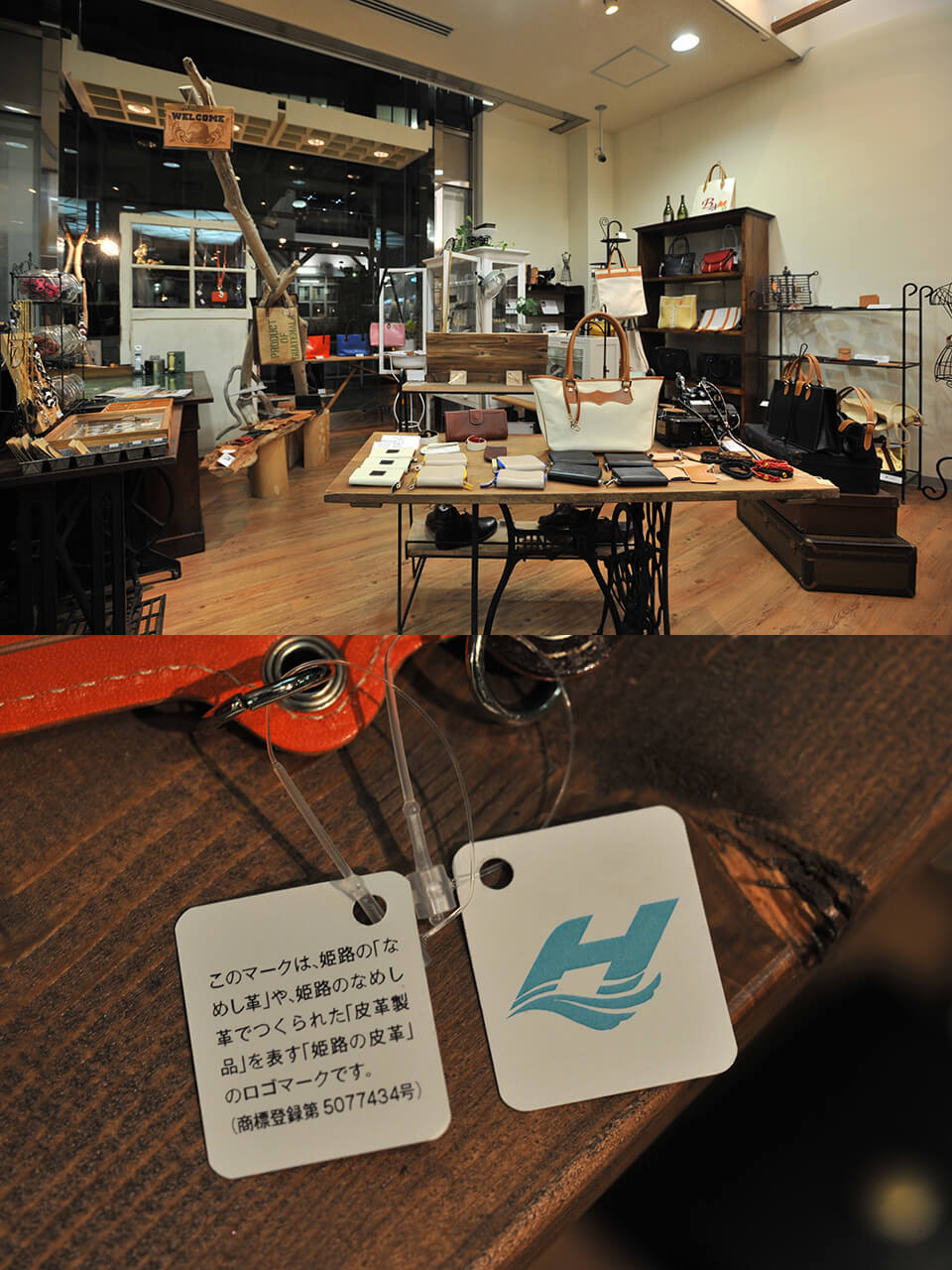
Leather studio BAIMO
Above) 1 minute walk from the south exit of Himeji Station. A must see.
Bottom) Himeji leather logo tag that started to be displayed. We wish you all the success.